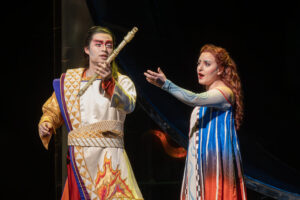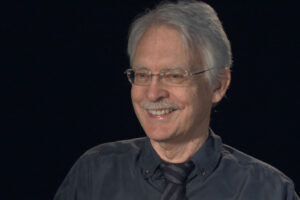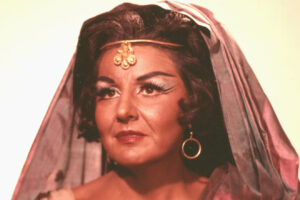

I think there is absolutely a place for “classic” productions in an opera house with the condition that the original director or a designated “revival” director be on hand to customize the production to new casts and the changing tastes of audiences. After about 20 or 25 years, though, I question whether even the best productions can speak as directly to an audiences as they did when new: the world changes and people have different standards of what is true and what seems phony.
If you screen films from the 1970s, there are a handful that hold up really beautifully today, e.g., The Godfather and Chinatown. But the majority of films from that era, including some that were very popular and well-reviewed at the times, feel mannered and artificial. We have moved beyond the 1970s Zeitgeist, and so those conventions we all accepted unthinkingly in the 1970s now seem as obvious as Faye Dunaway‘s false eyelashes.
This happens with opera productions too: not just the visual but the more broadly thematic. Franco Zeffirelli‘s Tosca is a very 1980s production of the opera: big, expensive, proudly gaudy. I would say that this Tosca is as much a product of the Reagan presidency as Dynasty was. The concept, if you can call it that, was that visual splendor and political power are intertwined: the might of the Church, for example, seemed to derive from the sheer numbers of supers and banners and incense burners Zeffirelli could pile onto the stage. And Scarpia’s office was absurdly (and illogically) oversized as a visual metaphor for the absolute and unyielding might of an oppressive government. The Zeffirelli Tosca was immensely glamorous, but that “glamour” was not purely aesthetic: it was a function of absolute power.
I would go farther and say that, in the mindset of the 1980s, “grandeur” and “power” were so symbiotic to become practically synonymous: grandeur derived from power and power from grandeur. But we don’t think in exactly those terms today: “Reaganesque” is now a dirty word. However, the “Reaganesque” qualities of that Tosca were immutable, right down to how Tosca was directed to grab the knife. The production was frozen in the 1980s, and meanwhile the rest of the world entered the 21st century.
Now, I realize that all this doesn’t mean much to people who go to the opera to hear pretty voices and looks at pretty sets. But that cadre of opera fans is dwindling rapidly, and at the Met (as it has already happened everywhere else in the world) the audience has to expand to include people who appreciate opera as a form of theatrical performance, i.e., as a drama created through music. It is a slow process building this audience and it started very late at the Met for various reasons. But I think it is an absolute necessary process, which means that the Met needs to experiment, not just recycle stuff that might have had some meaning 40 years ago.

























Comments